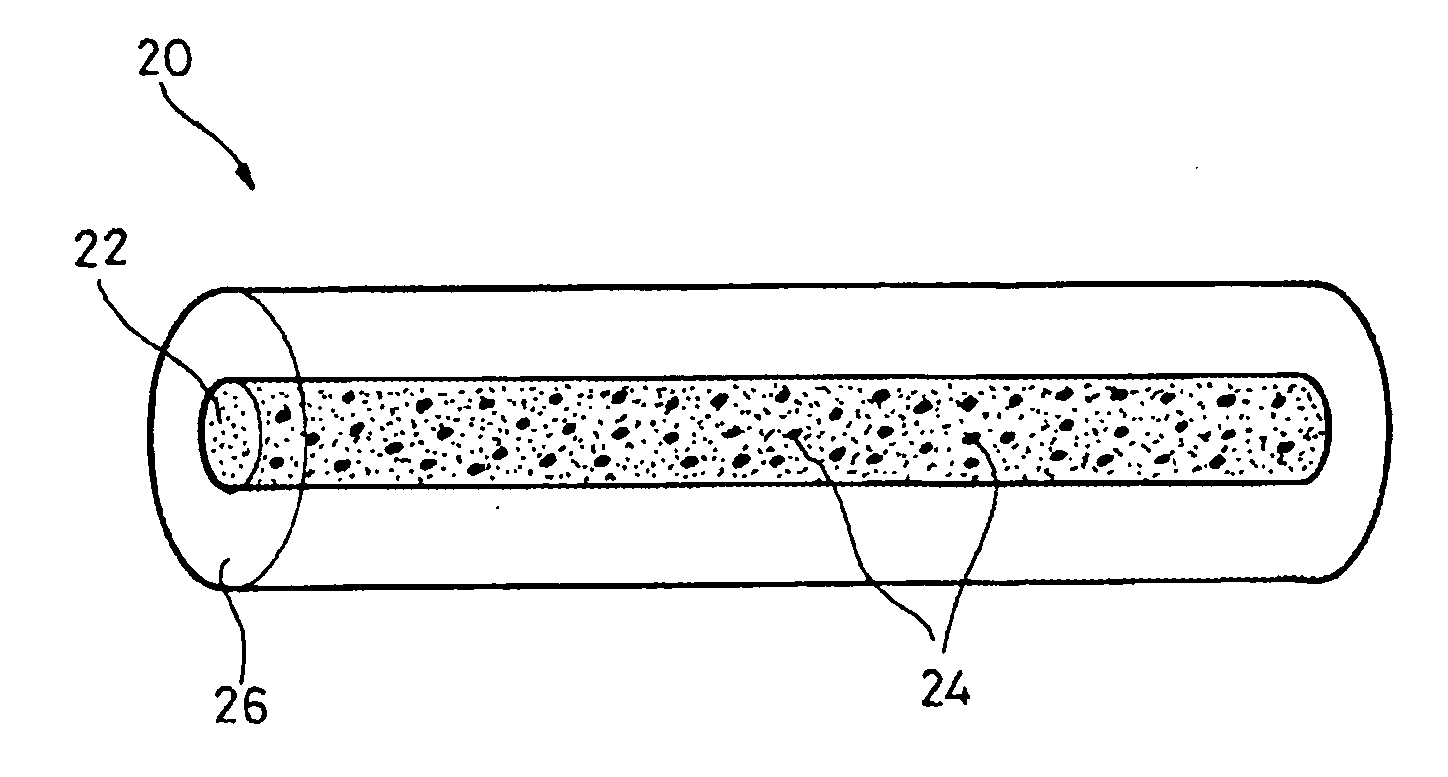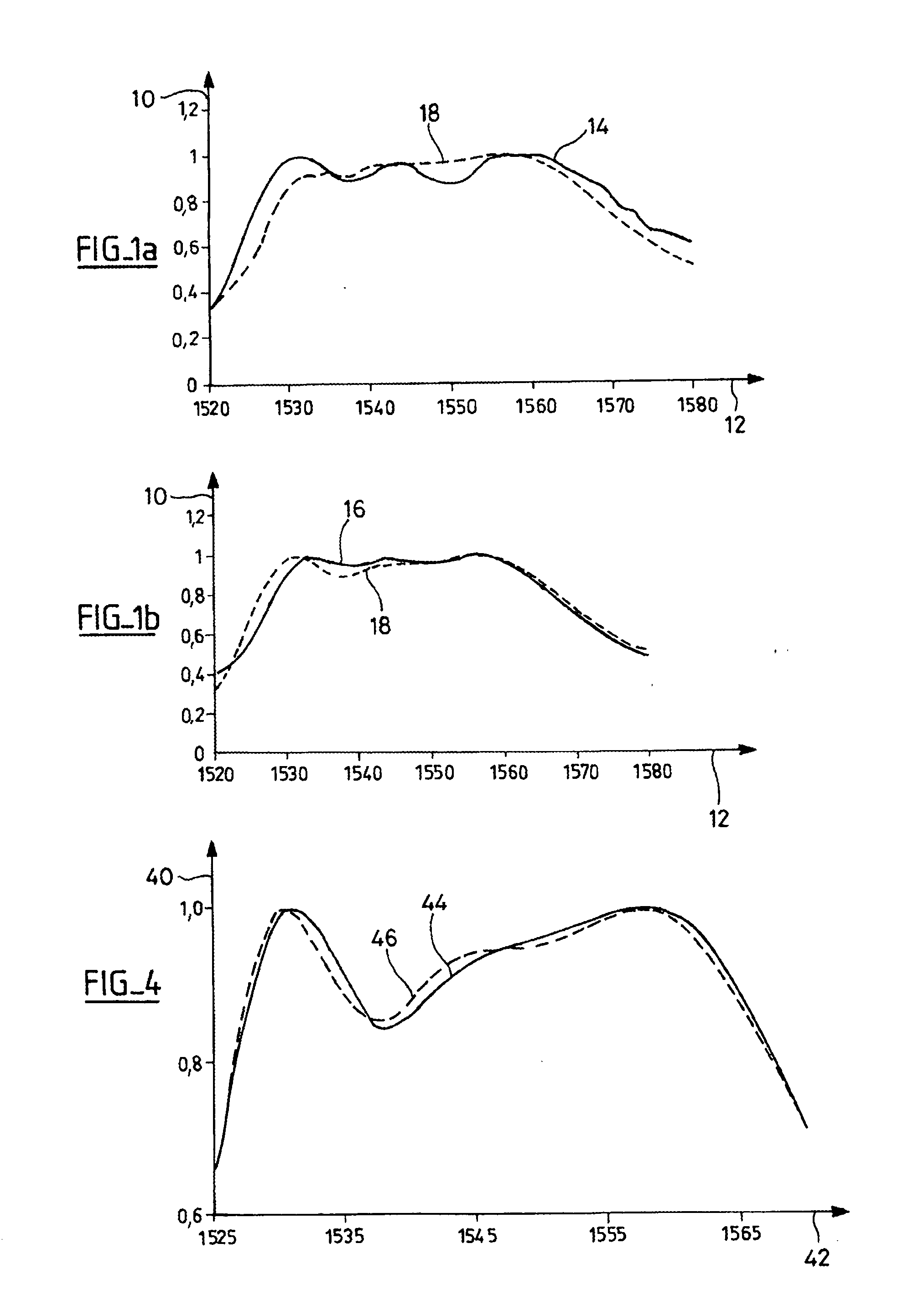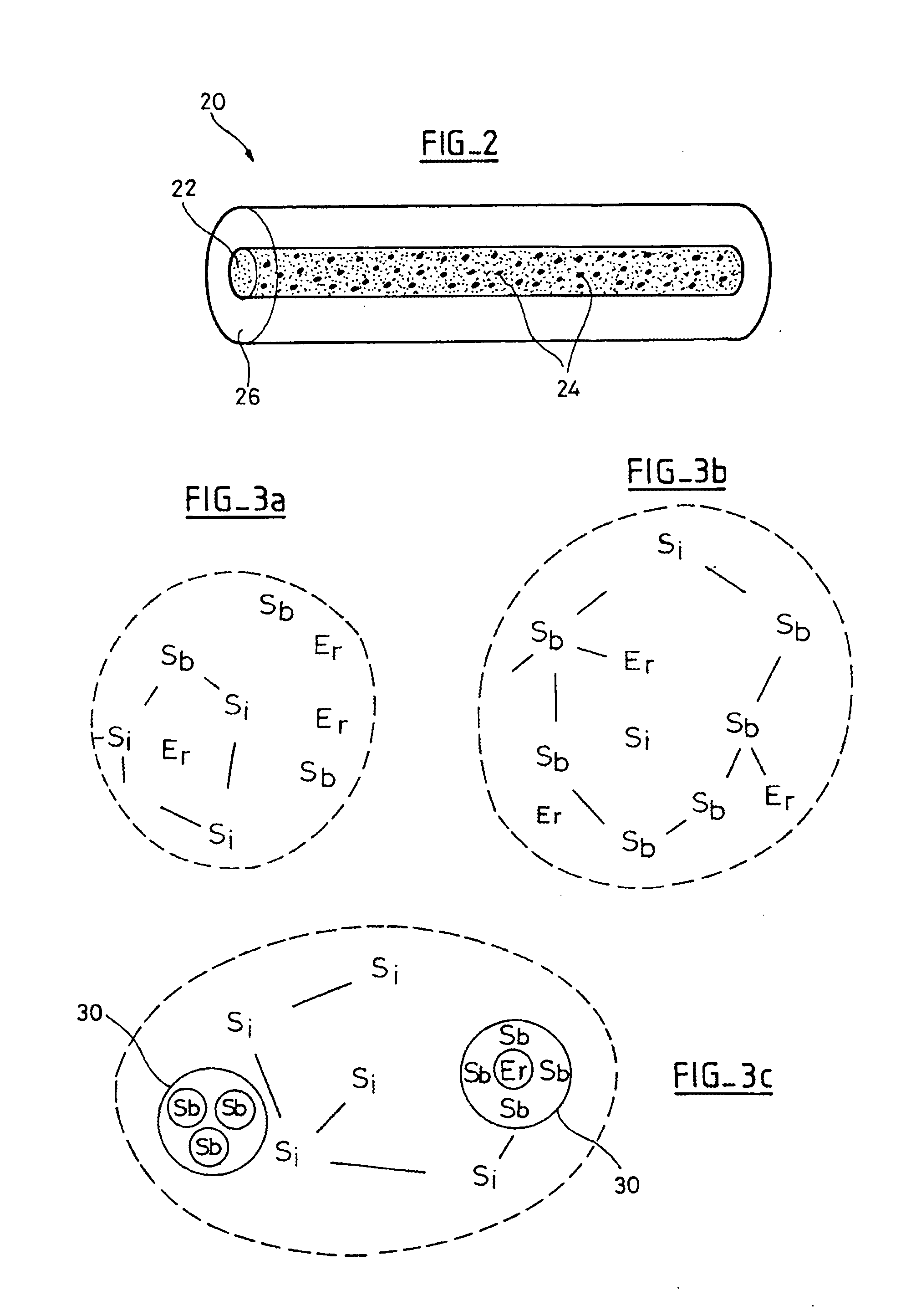Optical guide including nanoparticles and manufacturing method for a preform intended to be shaped into such an optical guide
a technology of optical guides and nanoparticles, which is applied in the field of optical guides, can solve the problems of not allowing the incorporation of these elements in a satisfactory manner, requiring complicated and costly fibre production techniques, and requiring complex and costly production techniques. , to achieve the effect of easy welding of standard fibres
- Summary
- Abstract
- Description
- Claims
- Application Information
AI Technical Summary
Benefits of technology
Problems solved by technology
Method used
Image
Examples
Embodiment Construction
[0031]Types of glass that include bismuth or antimony have particularly interesting characteristics described below with the help of FIGS. 1a and 1b, which represent amplification gains for materials comprising erbium as the doping element and antimony (FIG. 1a) or bismuth (FIG. 1b) as the enhancement element.
[0032]More precisely, these FIGS. 1a and 1b represent the material's amplification gain (y-axis 10) as a function of the wavelength of the amplified signal (x-axis 12) for fibres comprised of antimony (curve 14, FIG. 1a) or bismuth (curve 16, FIG. 1b), these gains being compared to those of a known fibre comprising aluminium as a doping agent (curve 18).
[0033]It thereupon becomes apparent that the respective properties of antimony (Sb) and bismuth (Bi) are interesting for processing an optical signal, to wit expanding the curve (Sb) of the gain medium's gain, or flattening said curve (Bi).
[0034]Thus, the usage of a filter intended to flatten the gain of a fibre is lower when th...
PUM
| Property | Measurement | Unit |
|---|---|---|
| size | aaaaa | aaaaa |
| size | aaaaa | aaaaa |
| size | aaaaa | aaaaa |
Abstract
Description
Claims
Application Information
 Login to View More
Login to View More - R&D
- Intellectual Property
- Life Sciences
- Materials
- Tech Scout
- Unparalleled Data Quality
- Higher Quality Content
- 60% Fewer Hallucinations
Browse by: Latest US Patents, China's latest patents, Technical Efficacy Thesaurus, Application Domain, Technology Topic, Popular Technical Reports.
© 2025 PatSnap. All rights reserved.Legal|Privacy policy|Modern Slavery Act Transparency Statement|Sitemap|About US| Contact US: help@patsnap.com



